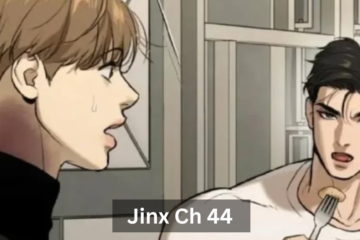BDSM is a dynamic world that combines both physical and emotional experiences. One of the lesser-discussed aspects of BDSM is the phenomenon known as “sub drop.” Whether you’re new to the kink community or an experienced BDSM practitioner, understanding sub drop is crucial to ensuring a safe, enjoyable, and emotionally healthy experience. This article explores what sub drop is, what causes it, how to manage it, and why aftercare is essential.
Sub drop is a term used in the BDSM community to describe the emotional and physical aftermath some submissive partners experience after an intense BDSM scene. After a powerful emotional connection and a heightened state of arousal during play, many submissives can experience a “drop” as the adrenaline rush fades. This drop can lead to a variety of feelings, including sadness, vulnerability, anxiety, and fatigue.
BDSM, which involves a power exchange between a dominant (Dom) and submissive (sub) partner, is not just about physical activities but also deeply emotional connections. These emotional connections create a unique environment where the sub may feel a deep sense of vulnerability once the scene ends. The transition from the heightened emotional state of submission to the “normal” world can leave a submissive partner feeling off-balance, vulnerable, or even isolated.
Sub drop is a natural and temporary reaction to the emotional intensity of BDSM play, and it does not reflect weakness. In fact, understanding sub drop and its effects is an essential part of building trust, communication, and empathy in BDSM relationships.
The Psychology Behind Sub Drop

How Endorphins and Adrenaline Play a Role
During a BDSM session, both the body and mind can experience an intense rush of endorphins and adrenaline. These chemicals are released as part of the body’s natural fight-or-flight response to intense stimulation, creating feelings of exhilaration, euphoria, and a heightened sense of awareness. However, once the scene ends and the adrenaline fades, the sub’s body can experience an “endorphin crash,” leading to fatigue, physical discomfort, and emotional vulnerability.
The Science of Power Exchange and Emotional Vulnerability
In BDSM play, power exchange is a key element. The submissive gives up control to the dominant, allowing for intense emotional and psychological experiences. This relinquishing of control can lead to feelings of vulnerability once the scene ends. The emotional vulnerability is one of the main reasons why sub drop can occur, as the sub may feel “exposed” or disconnected from the intense bond they shared during the scene. The lack of control can leave them emotionally drained, and without proper aftercare, this vulnerability can deepen.
What Causes Sub Drop?
Sub drop can stem from a variety of factors, each unique to the individuals involved and the dynamics of their BDSM play.
Intense Physical and Emotional Experiences in BDSM Play
The physical stimulation during BDSM play, combined with emotional surrender, creates a cocktail of sensory experiences that can be overwhelming for a submissive partner. The rush of pleasure, pain, or arousal experienced during a BDSM scene can lead to a temporary emotional high. Once the scene ends, however, the sudden shift to a more neutral state can cause a crash, triggering sub drop.
The Role of Dominance and Submission (D/s) Dynamics
The D/s dynamic is foundational in BDSM play, where the dominant takes control and the submissive relinquishes it. This power imbalance can be psychologically intense, leading to a sense of loss or disorientation once the scene ends. Without the dominant partner to provide grounding or reassurance, the sub may experience an emotional drop.
Personal Boundaries and Triggers in BDSM
Engaging in BDSM activities that push personal boundaries can trigger sub drop, especially if a submissive partner’s emotional or physical limits were stretched. For example, certain activities may inadvertently touch on past traumas, which can worsen sub drop symptoms. It’s vital for both partners to discuss boundaries before play and ensure they are respected throughout the scene.
Lack of Aftercare and Inadequate Communication
One of the most common causes of sub drop is inadequate aftercare. Aftercare refers to the care and emotional support given to the submissive after the scene ends. Without it, the sub may feel abandoned or emotionally exposed, which can lead to feelings of sadness, confusion, and vulnerability. Effective communication before, during, and after a BDSM scene is critical to reducing the likelihood and severity of sub drop.
Symptoms of Sub Drop
Sub drop can affect individuals in different ways, but the symptoms are often similar, ranging from physical to emotional and mental effects.
Physical Symptoms: Fatigue, Muscle Aches, and Headaches
The intense physical stimulation during BDSM play can result in muscle aches, fatigue, and even headaches post-scene. This physical discomfort is often due to the body’s reaction to the high levels of stimulation and the subsequent “cool down” phase.
Emotional Symptoms: Sadness, Anxiety, and Vulnerability
Emotionally, sub drop can manifest as a sense of sadness, anxiety, or a deep vulnerability. After the intense connection and intimacy of BDSM play, the emotional withdrawal can create feelings of loneliness, disorientation, or insecurity. These emotions are a natural part of the recovery process and can be managed with proper aftercare.
Mental Symptoms: Confusion, Self-Doubt, and Disorientation
The mental effects of sub drop can include confusion, self-doubt, and disorientation. This can happen as the sub’s mind processes the intense emotions experienced during the scene. A sudden return to normality after an emotionally charged session can feel jarring, leading to difficulty reorienting themselves.
How Long Does Sub Drop Last?
Typical Duration of Sub Drop Episodes
Sub drop does not have a fixed duration; it varies depending on the individual, the intensity of the scene, and how well the aftercare process is handled. In general, sub drop may last anywhere from a few hours to a couple of days, but with appropriate self-care, the symptoms should subside in time.
Factors Affecting the Duration of Sub Drop
Several factors can influence the duration of sub drop, including the level of emotional and physical intensity during the scene, the sub’s emotional well-being before the scene, and the quality of aftercare received. Additionally, past experiences, personal triggers, and individual coping mechanisms can impact how long the sub drop lasts.
Managing Sub Drop: Self-Care Strategies
Importance of Rest and Physical Recovery
Rest is one of the most important aspects of recovering from sub drop. Physical fatigue and muscle aches are common, so it’s essential to allow the body time to recover. Resting, drinking water, and eating nourishing foods can help to restore energy and balance after a scene.
Emotional Grounding Techniques: Breathing and Mindfulness
Emotional grounding techniques like deep breathing, mindfulness, and meditation can help manage the emotional effects of sub drop. These practices can help the submissive reconnect with themselves and calm anxiety or confusion. Taking time to focus on the present moment and reassure themselves emotionally can help alleviate the feelings of vulnerability often experienced post-scene.
Engaging in Comforting Activities (Reading, Baths, etc.)
Engaging in comforting and familiar activities like reading, taking a warm bath, or cuddling with a trusted partner can help the submissive feel grounded and emotionally supported. These activities offer emotional reassurance and can ease the process of recovery from sub drop.
The Importance of Aftercare in Preventing Sub Drop
What is Aftercare in BDSM?
Aftercare is a term used to describe the physical, emotional, and psychological support provided to a submissive after a BDSM scene. The purpose of aftercare is to ensure that the submissive feels safe, cared for, and emotionally grounded. Aftercare helps mitigate the effects of sub drop by providing reassurance, comfort, and stability.
Aftercare Techniques for Submissives: Emotional and Physical Support
Aftercare techniques vary depending on the needs of the submissive. Common aftercare practices include physical touch, such as hugging or cuddling, as well as emotional support, like verbal reassurance and communication. For some, aftercare may involve quiet time alone, while others may need more active engagement from their dominant partner.
How Dominants Can Support Their Submissive Post-Scene
Dominants play a crucial role in aftercare. They can provide comfort by being present, offering gentle reassurance, and checking in emotionally. Dominants should be attuned to their submissive’s needs and be prepared to offer whatever support is necessary to ease the sub drop.
How to Communicate with Your Partner About Sub Drop
Setting Expectations Before a BDSM Scene
Clear communication before the scene is essential. Discuss boundaries, expectations, and what kind of aftercare is desired beforehand. This allows both partners to feel more secure and prepared for the emotional and physical aftermath.
Open Dialogue and Emotional Check-ins During Aftercare
During aftercare, continuous communication is vital. The dominant should check in with the submissive regularly, asking how they feel and what they need. This ensures that the submissive is receiving the emotional support they require.
Creating a Safe Space for Vulnerability
Sub drop can leave a submissive feeling vulnerable, and it’s crucial for both partners to create a safe emotional space during aftercare. This includes encouraging openness and being understanding of any emotions that arise.
When Sub Drop Becomes a Concern: Recognizing Severe Symptoms
Identifying Intense or Prolonged Sub Drop Episodes
In some cases, sub drop can be intense or prolonged. If a submissive feels overwhelmed by sadness, confusion, or anxiety for an extended period, it may be necessary to seek additional support.
Seeking Professional Support: BDSM Educators and Therapists
If sub drop symptoms persist or seem too overwhelming to manage alone, it may be helpful to seek professional support. BDSM educators or kink-positive therapists can provide guidance on emotional recovery and help navigate the psychological effects of BDSM.
Preventing Sub Drop: Key Strategies for Submissives and Dominants

Importance of Setting Boundaries and Consent
Establishing clear boundaries and obtaining explicit consent is critical to preventing sub drop. When both partners understand each other’s limits and communicate openly, the risk of sub drop can be minimized.
Incorporating Aftercare Practices into Every BDSM Scene
Aftercare should be a non-negotiable part of every BDSM scene. Both dominant and submissive partners should prioritize aftercare to support emotional well-being and ensure a smooth transition after a scene. By creating an aftercare routine that works for both partners, the risk of sub drop can be greatly reduced, and emotional recovery can be more effective.
Regular Communication and Check-ins During BDSM Play
Ongoing communication during BDSM play is crucial for preventing sub drop. Before, during, and after a scene, partners should check in with each other to ensure they are comfortable, safe, and enjoying the experience. This open communication helps create a stronger bond between the dominant and submissive, making the emotional aftermath easier to manage.
Building Resilience: Strengthening the Submissive-Dominant Relationship
Building a resilient relationship based on trust, understanding, and empathy is key in preventing sub drop. By strengthening emotional bonds, both partners can weather the emotional intensity of BDSM play more effectively. Trust in the D/s dynamics and in the ability of both partners to handle emotional vulnerability can make the post-scene recovery process smoother and less overwhelming.
Trust and Empathy in D/s Dynamics
Trust and empathy form the foundation of the D/s dynamic. When both partners trust each other and feel emotionally safe, the submissive can more easily surrender during play and trust that they will be cared for afterward. This mutual trust can make the experience emotionally enriching, and it can reduce the intensity of sub drop by creating a supportive atmosphere.
The Role of Support Systems in BDSM Relationships
Support systems, such as BDSM communities, kink-positive therapists, and aftercare groups, can be incredibly beneficial for both submissives and dominants. These support systems provide a space for individuals to talk about their experiences, share coping strategies, and get advice from others who understand the unique emotional needs of BDSM play. A strong support network can make it easier to cope with the emotional aftermath and provide reassurance when dealing with sub drop.
How Healthy Communication Can Prevent Sub Drop
Healthy communication between dominant and submissive partners is essential in preventing sub drop. By discussing emotional needs before, during, and after a scene, both partners can create a safer and more supportive environment. Clear communication about boundaries, aftercare preferences, and expectations helps ensure that both partners are emotionally prepared for the intensity of the scene and its aftermath. This reduces the likelihood of emotional overwhelm and sub drop.
Conclusion
Sub drop is a natural and often inevitable part of BDSM play, but it is manageable and preventable with proper aftercare, communication, and mutual care. Embracing the emotional aftermath of BDSM play allows both partners to grow closer, build trust, and strengthen their connection. By focusing on emotional support, setting boundaries, and prioritizing aftercare, the sub drop experience can be navigated with ease and resilience.
Sub Drop as a Natural Part of BDSM Play
It’s important to understand that sub drop is not something to be feared or stigmatized. It is simply a natural response to the intense physical, emotional, and psychological experiences that come with BDSM play. Embracing sub drop as part of the process allows for growth, learning, and a deeper understanding of oneself and one’s partner.
Both submissive and dominant partners play a crucial role in preventing and managing sub drop. Mutual care, empathy, and understanding are essential components of a successful BDSM relationship. By prioritizing each other’s emotional well-being, both partners can enjoy BDSM play while minimizing the emotional fallout that may come afterward.
Self-awareness is key to managing sub drop effectively. Submissives and dominants alike should take time to reflect on their emotional responses, their limits, and their needs. This self-awareness can lead to more fulfilling and emotionally healthy BDSM experiences. With ongoing communication, aftercare, and emotional support, both partners can navigate sub drop and emerge stronger, with a deeper understanding of their emotional needs and boundaries.
Frequently Asked Questions
Is sub drop a sign of weakness?
No, sub drop is not a sign of weakness. It is a natural emotional and physical response to the intense experiences of BDSM play. It is essential for both partners to understand that sub drop is temporary and part of the recovery process.
How can I prevent sub drop?
Prevention of sub drop is largely based on communication and aftercare. Set clear boundaries and expectations before the scene, and provide emotional and physical support afterward. Regular check-ins and open dialogue are key in reducing the likelihood of sub drop.
How long does sub drop last?
The duration of sub drop varies from person to person, but it typically lasts from a few hours to a couple of days. The severity and duration depend on the intensity of the scene, the emotional support provided, and the individual’s coping mechanisms.
Can sub drop be severe?
Yes, in some cases, sub drop can be severe, leading to prolonged emotional distress. If sub drop lasts for an extended period or significantly impacts a person’s emotional well-being, it may be helpful to seek professional support from a kink-positive therapist or BDSM educator.
Is aftercare always necessary?
Yes, aftercare is a crucial part of any BDSM scene, especially for submissive partners. Aftercare helps to soothe the emotional and physical effects of the scene, promoting recovery and ensuring that both partners feel safe and cared for.
Stay in touch to get more updates & alerts on Creative Released! Thank you



